 | ÐлекÑÑоннÑй компоненÑ: IRGPC40K | СкаÑаÑÑ:  PDF PDF  ZIP ZIP |
pc40k
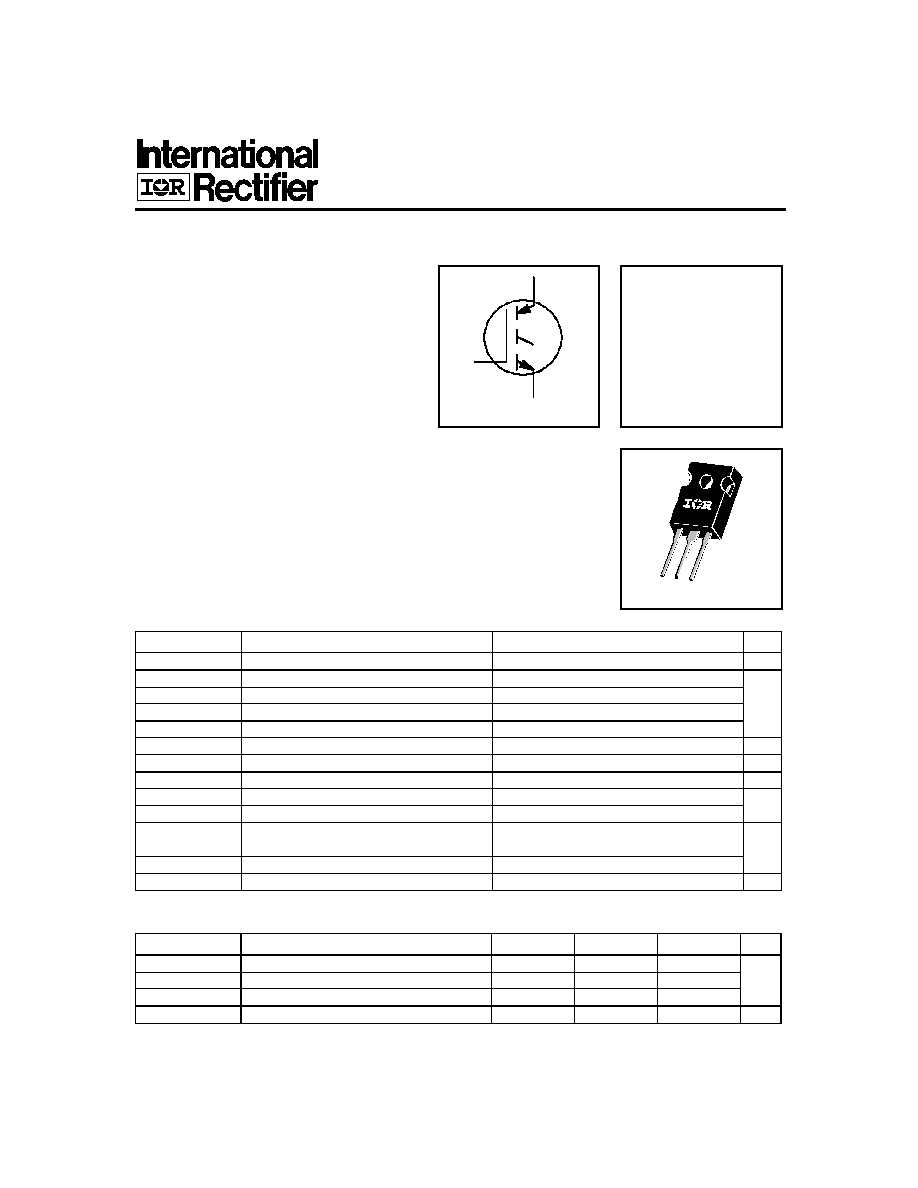
IRGPC40K
Short Circuit Rated
UltraFast IGBT
INSULATED GATE BIPOLAR TRANSISTOR
Parameter
Min.
Typ.
Max.
Units
R
JC
Junction-to-Case
------
------
0.77
R
CS
Case-to-Sink, flat, greased surface
------
0.24
------
°C/W
R
JA
Junction-to-Ambient, typical socket mount
------
------
40
Wt
Weight
------
6 (0.21)
------
g (oz)
Features
· Short circuit rated - 10µs @ 125°C, V
GE
= 15V
· Switching-loss rating includes all "tail" losses
· Optimized for high operating frequency (over
5kHz)
See Fig. 1 for Current vs. Frequency
curve
V
CES
= 600V
V
CE(sat)
3.2V
@V
GE
= 15V, I
C
= 25A
E
C
G
n-channel
Absolute Maximum Ratings
Parameter
Max.
Units
V
CES
Collector-to-Emitter Voltage
600
V
I
C
@ T
C
= 25°C
Continuous Collector Current
42
I
C
@ T
C
= 100°C
Continuous Collector Current
25
A
I
CM
Pulsed Collector Current
84
I
LM
Clamped Inductive Load Current
84
t
sc
Short Circuit Withstand Time
10
µs
V
GE
Gate-to-Emitter Voltage
±20
V
E
ARV
Reverse Voltage Avalanche Energy
15
mJ
P
D
@ T
C
= 25°C
Maximum Power Dissipation
160
W
P
D
@ T
C
= 100°C
Maximum Power Dissipation
65
T
J
Operating Junction and
-55 to +150
T
STG
Storage Temperature Range
°C
Soldering Temperature, for 10 sec.
300 (0.063 in. (1.6mm) from case)
Mounting torque, 6-32 or M3 screw.
10 lbf·in (1.1N·m)
TO -2 4 7 AC
PD - 9.1077
Thermal Resistance
Insulated Gate Bipolar Transistors (IGBTs) from International Rectifier
have higher usable current densities than comparable bipolar transistors,
while at the same time having simpler gate-drive requirements of the
familiar power MOSFET. They provide substantial benefits to a host of
high-voltage, high-current applications.
These new short circuit rated devices are especially suited for motor
control and other applications requiring short circuit withstand capability.
Description
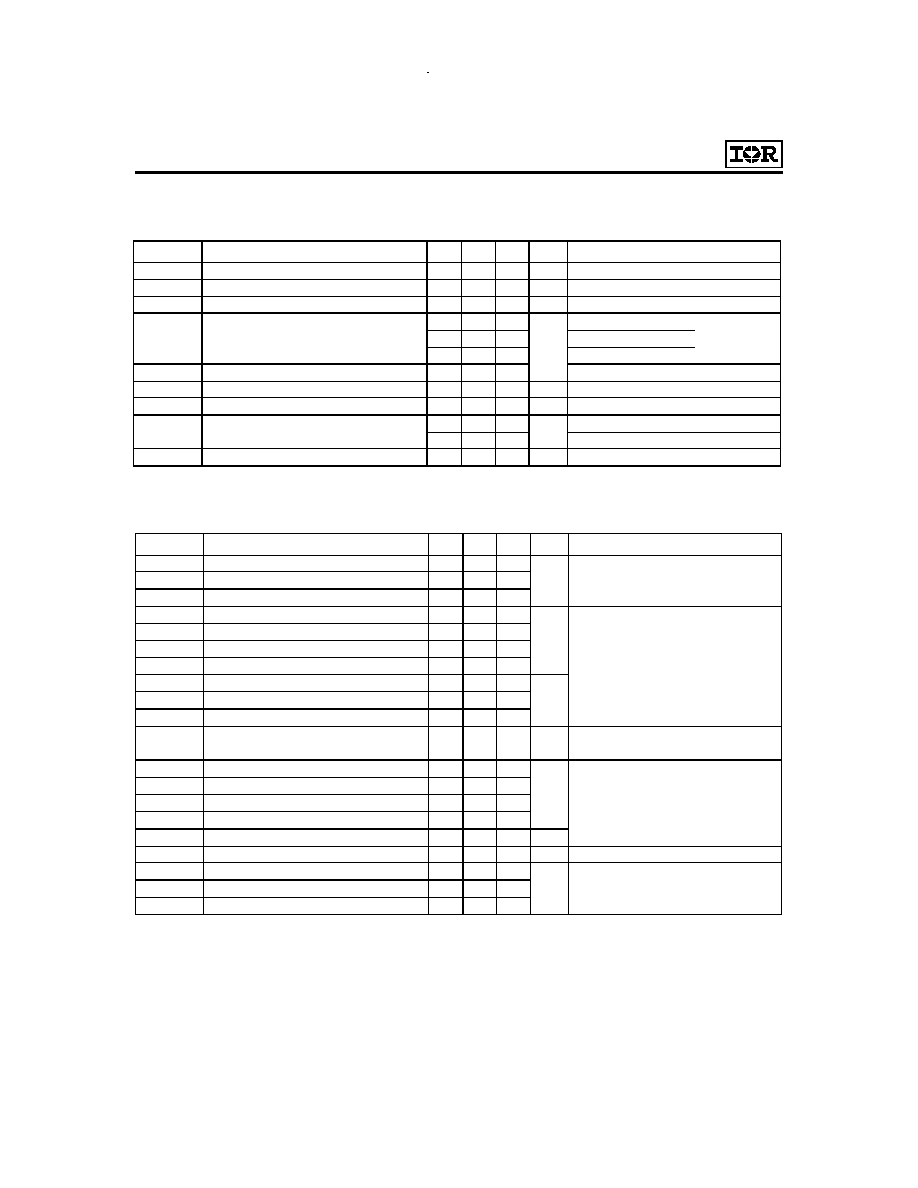
IRGPC40K
Notes:
V
CC
=80%(V
CES
), V
GE
=20V, L=10µH,
R
G
= 10
, ( See fig. 13a )
Repetitive rating; V
GE
=20V, pulse width
limited by max. junction temperature.
( See fig. 13b )
Repetitive rating; pulse width limited
by maximum junction temperature.
Pulse width
80µs; duty factor
0.1%.
Pulse width 5.0µs,
single shot.
Switching Characteristics @ T
J
= 25°C (unless otherwise specified)
Parameter
Min. Typ. Max. Units
Conditions
Q
g
Total Gate Charge (turn-on)
----
61
92
I
C
= 25A
Q
ge
Gate - Emitter Charge (turn-on)
----
13
19
nC
V
CC
= 400V
See Fig. 8
Q
gc
Gate - Collector Charge (turn-on)
----
22
33
V
GE
= 15V
t
d(on)
Turn-On Delay Time
----
35
----
T
J
= 25°C
t
r
Rise Time
----
27
----
ns
I
C
= 25A, V
CC
= 480V
t
d(off)
Turn-Off Delay Time
----
160
240
V
GE
= 15V, R
G
= 10
t
f
Fall Time
----
130
200
Energy losses include "tail"
E
on
Turn-On Switching Loss
----
0.52
----
E
off
Turn-Off Switching Loss
----
1.2
----
mJ
See Fig. 9, 10, 11, 14
E
ts
Total Switching Loss
----
1.7
2.6
t
sc
Short Circuit Withstand Time
10
----
----
µs
V
CC
= 360V, T
J
= 125°C
V
GE
= 15V, R
G
= 10
, V
CPK
< 500V
t
d(on)
Turn-On Delay Time
----
34
----
T
J
= 150°C,
t
r
Rise Time
----
28
----
ns
I
C
= 25A, V
CC
= 480V
t
d(off)
Turn-Off Delay Time
----
300
----
V
GE
= 15V, R
G
= 10
t
f
Fall Time
----
310
----
Energy losses include "tail"
E
ts
Total Switching Loss
----
3.6
----
mJ
See Fig. 10, 14
L
E
Internal Emitter Inductance
----
7.5
----
nH
Measured 5mm from package
C
ies
Input Capacitance
----
1500
----
V
GE
= 0V
C
oes
Output Capacitance
----
190
----
pF
V
CC
= 30V
See Fig. 7
C
res
Reverse Transfer Capacitance
----
17
----
= 1.0MHz
Parameter
Min. Typ. Max. Units
Conditions
V
(BR)CES
Collector-to-Emitter Breakdown Voltage
600
----
----
V
V
GE
= 0V, I
C
= 250µA
V
(BR)ECS
Emitter-to-Collector Breakdown Voltage
20
----
----
V
V
GE
= 0V, I
C
= 1.0A
V
(BR)CES
/
T
J
Temperature Coeff. of Breakdown Voltage---- 0.46
----
V/°C
V
GE
= 0V, I
C
= 1.0mA
V
CE(on)
Collector-to-Emitter Saturation Voltage
----
2.1
3.2
I
C
= 25A
V
GE
= 15V
----
2.8
----
V
I
C
= 42A
See Fig. 2, 5
----
2.5
----
I
C
= 25A, T
J
= 150°C
V
GE(th)
Gate Threshold Voltage
3.0
----
5.5
V
CE
= V
GE
, I
C
= 250µA
V
GE(th)
/
T
J
Temperature Coeff. of Threshold Voltage ----
-13
---- mV/°C V
CE
= V
GE
, I
C
= 250µA
g
fe
Forward Transconductance
7.0
14
----
S
V
CE
= 100V, I
C
= 25A
I
CES
Zero Gate Voltage Collector Current
----
----
250
µA
V
GE
= 0V, V
CE
= 600V
----
----
1000
V
GE
= 0V, V
CE
= 600V, T
J
= 150°C
I
GES
Gate-to-Emitter Leakage Current
----
----
±100
nA
V
GE
= ±20V
Electrical Characteristics @ T
J
= 25°C (unless otherwise specified)
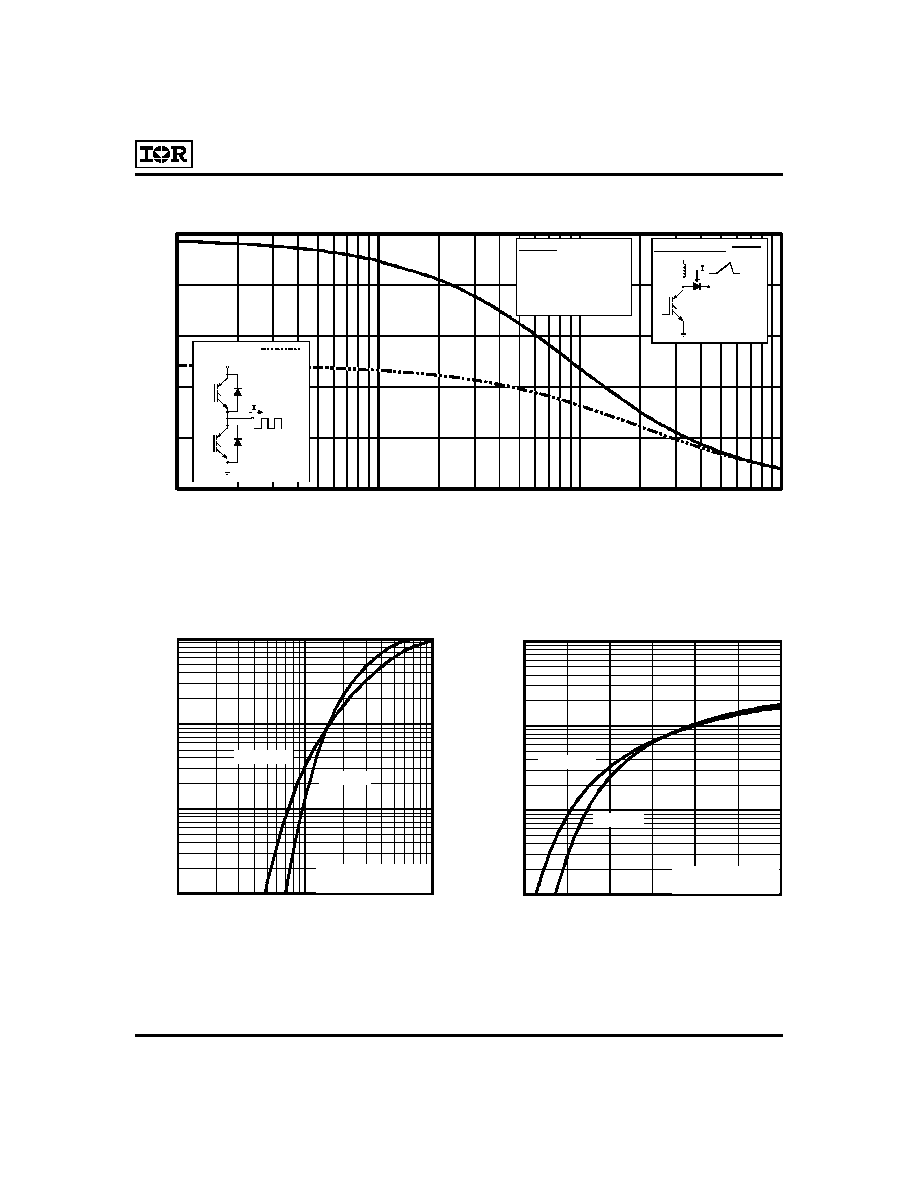
Fig. 1 - Typical Load Current vs. Frequency
(For square wave, I=I
RMS
of fundamental; for triangular wave, I=I
PK
)
Fig. 2 - Typical Output Characteristics
Fig. 3 - Typical Transfer Characteristics
IRGPC40K
0.1
1
1 0
1 0 0
0.1
1
1 0
CE
C
I
, Coll
ector-to
-Emitter Cu
rrent (A)
V , Collector-to-Emitter Voltage (V)
T = 150°C
T = 25°C
J
J
V = 15V
20µs PULSE WIDTH
GE
A
1
1 0
1 0 0
1 0 0 0
5
1 0
1 5
2 0
C
I , Co
llector-to
-Emitter
C
u
rrent (A)
GE
T = 25°C
T = 150°C
J
J
V = 100V
5µs PULSE WIDTH
CC
V , Gate-to-Emitter Voltage (V)
A
0
1 0
2 0
3 0
4 0
5 0
0.1
1
1 0
1 0 0
f, Frequency (kHz)
Loa
d Cu
rren
t (A
)
A
60% of rated
voltage
Ideal diodes
Square wave:
Triangular wave:
Clamp voltage:
80% of rated
For both:
Duty cycle: 50%
T = 125°C
T = 90°C
Gate drive as specified
sink
J
Power Dissipation = 35W
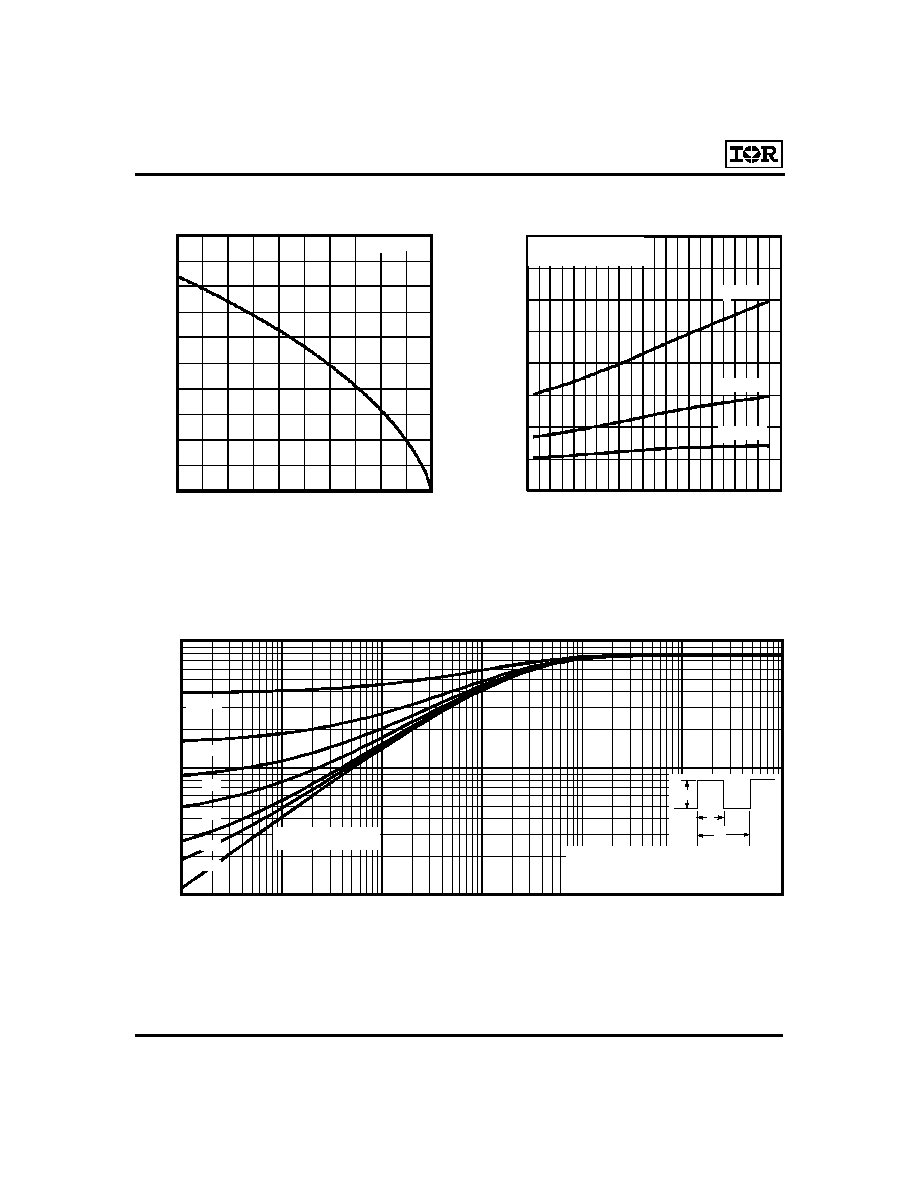
Fig. 5 - Collector-to-Emitter Voltage vs.
Case Temperature
Fig. 4 - Maximum Collector Current vs.
Case Temperature
IRGPC40K
Fig. 6 - Maximum Effective Transient Thermal Impedance, Junction-to-Case
0.01
0.1
1
0.00001
0.0001
0.001
0.01
0.1
1
10
t , Rectangular Pulse Duration (sec)
1
th
J
C
D = 0.50
0.01
0.02
0.05
0.10
0.20
SINGLE PULSE
(THERMAL RESPONSE)
T
h
e
r
m
a
l
R
e
s
p
o
n
s
e
(
Z
)
P
t
2
1
t
DM
Notes:
1. Duty factor D = t / t
2. Peak T = P x Z + T
1
2
J
DM
thJC
C
0
1 0
2 0
3 0
4 0
5 0
2 5
5 0
7 5
1 0 0
1 2 5
1 5 0
Ma
x
i
mum
D
C
Coll
ecto
r C
urre
nt (A
)
T , Case Temperature (°C)
C
V = 15V
GE
A
1.0
2.0
3.0
4.0
5.0
-60
-40
-20
0
2 0
4 0
6 0
8 0
1 0 0 1 2 0 1 4 0 1 6 0
C
CE
V
, C
olle
ctor
-to-
Em
itter
Volt
age (
V
)
V = 15V
80µs PULSE WIDTH
GE
T , Case Temperature (°C)
A
I = 50A
I = 25A
I = 13A
C
C
C
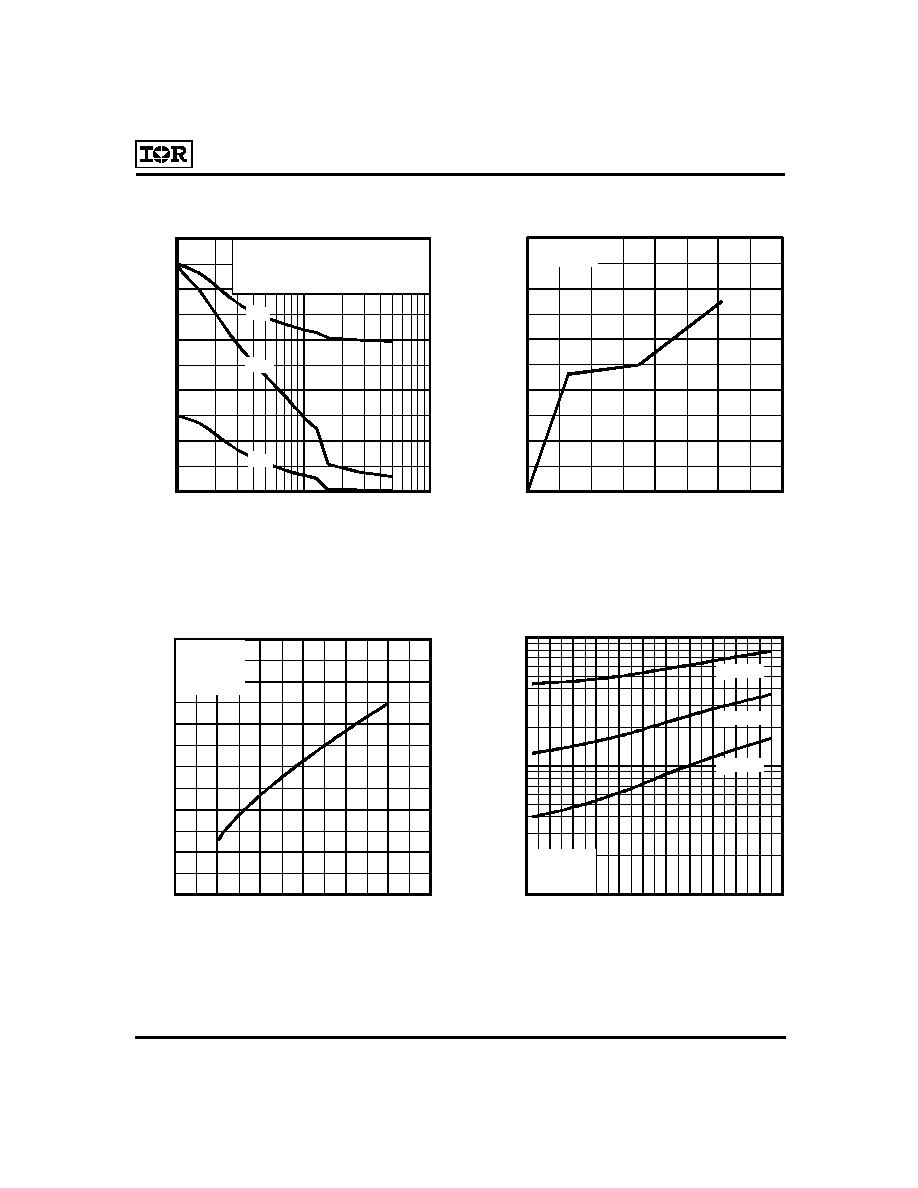
IRGPC40K
Fig. 7 - Typical Capacitance vs.
Collector-to-Emitter Voltage
Fig. 8 - Typical Gate Charge vs.
Gate-to-Emitter Voltage
Fig. 9 - Typical Switching Losses vs. Gate
Resistance
Fig. 10 - Typical Switching Losses vs.
Case Temperature
0.1
1
1 0
-60
-40
-20
0
2 0
4 0
6 0
8 0
1 0 0 1 2 0 1 4 0 1 6 0
C
T , Case Temperature (°C)
Tot
al Sw
itch
ing
Losse
s (m
J)
R = 10
V = 15V
V = 480V
G
GE
CC
A
I = 50A
I = 25A
I = 13A
C
C
C
1.6
1.7
1.8
1.9
2.0
2.1
2.2
0
1 0
2 0
3 0
4 0
5 0
6 0
G
T
otal S
witc
hing
Loss
es (
m
J
)
R , Gate Resistance (
)
A
V = 480V
V = 15V
T = 25°C
I = 25A
CC
GE
C
C
0
5 0 0
1 0 0 0
1 5 0 0
2 0 0 0
2 5 0 0
1
1 0
1 0 0
CE
C
,
C
apac
itan
ce (
pF)
V , Collector-to-Emitter Voltage (V)
A
V = 0V, f = 1MHz
C = C + C , C SHORTED
C = C
C = C + C
GE
ies ge gc ce
res gc
oes ce gc
C
ies
C
res
C
oes
0
4
8
1 2
1 6
2 0
0
2 0
4 0
6 0
8 0
GE
V
, G
ate-
to-E
mi
tter
Volt
age (
V
)
g
Q , Total Gate Charge (nC)
A
V = 400V
I = 25A
CE
C




